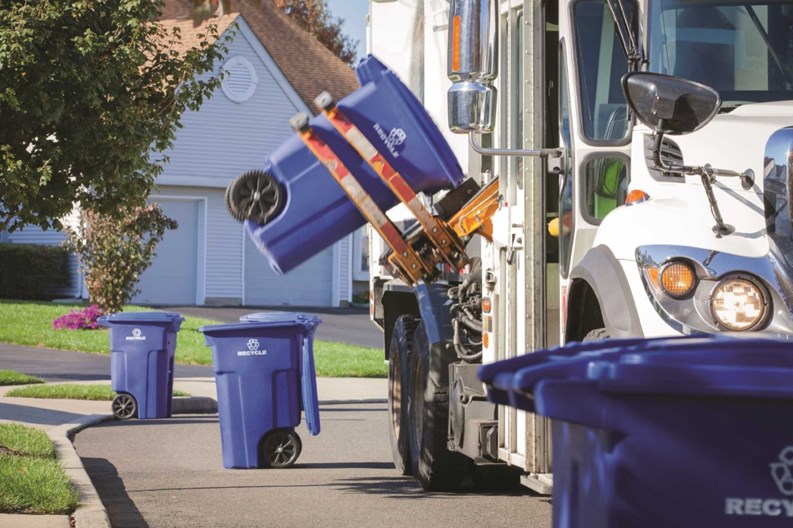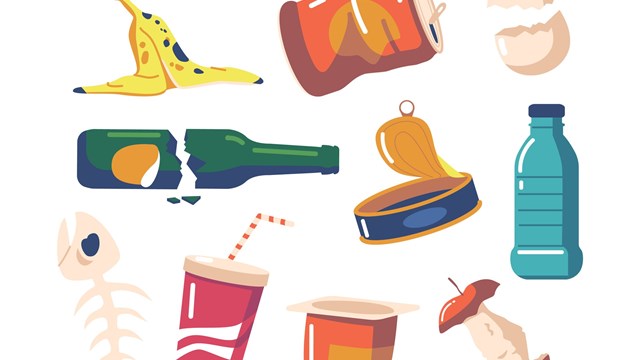Chicago is trashy. Literally. Whether it’s paper plates, cups, napkins, food waste or E-waste, such as discarded computers, office electronic equipment, entertainment systems or mobile phones, every day, residents of the Windy City produce hundreds of tons of trash. In 2012, the city's Department of Streets and Sanitation hauled away 892,034 tons of garbage in Chicagoland. That’s about 657 pounds per person. Removing a multifamily community’s trash and recyclables is an important job and if not handled correctly, things can get messy.
Once all that garbage is carted away from their driveways and curbs, however, most people don’t give it much further thought. It has to go somewhere, though, and most often, it goes to landfills, transfer stations and treatment plants throughout the state, or onto trains and barges and sent even farther afield. Dump sites for Chicago area refuse are located in Dolton and Pontiac, Illinois, as well as Brook and Monticello, Indiana.
While most everyone is happy to get their garbage off their hands, they tend to be less enthused about having those aforementioned landfills, transfer stations, or treatment facilities anywhere near their homes or communities due to environmental and economic concerns. Experts note that if garbage facilities are not properly cared for or do not follow guidelines, there could be odor and rodent issues, as well as problems with birds and seagulls in some places.
It is incredibly important to know where your building’s garbage and recycling is going and to educate yourself about new waste and recycling practices. After all, a landfill or processing center could be proposed to open near your neck of the woods—and landfills are one of the most potent contributors to global warming, responsible for 36 percent of all methane emissions in the United States.
Or, perhaps a recycling hub could start in your own building’s basement. Or maybe you’ve got an electronics recycling box in your basement already (most big buildings already do). Regardless—you should be informed.
Chicagoland’s Garbage
The Chicago metro region has six active landfills, five of which are currently designed to reach full capacity within 10 years, according to the Illinois Environmental Protection Act of 2011. Even though dumping sites are located well outside of city limits it is incredibly important to know where your building’s garbage and recycling is going, and to educate yourself about new waste and recycling practices.
The Bureau of Sanitation has district and ward sanitation offices located throughout the city responsible for coordinating local garbage pickup, sanitation code enforcement, snow removal operations and other services. District and ward superintendents monitor their sections of the city for any non-sanitation bureau services that might be needed, reporting these to the appropriate bureau or outside agency for attention.
“Once it is picked up, all the garbage in Chicago goes to a transfer station,” says Shawn Flood of The Flood Brothers, a Chicago-based company that offers disposal & recycling services. “At the transfer station it is sorted. They pull out all the papers, cardboard and aluminum, anything that’s recyclable, and sometimes food compost. Then whatever is left over is put into a truck and shipped out to landfills. But, at least 70 percent of the material ends up getting recycled.”
Waste management is a crucial issue for Chicago because it’s the third most populous city in the country with 2.715 million residents, and that comes with challenges.
“A challenge for the city is the Chicago permit fees and being able to document which companies have what dumpsters,” says Flood. “The city has absolutely no technology that documents this. If the city implemented a Radio Frequency Identification (RFID) program they would be able to track the dumpsters more precisely. Now the garbage company has to put a name on the dumpster, and if the dumpster is overflowing the city just writes anybody a ticket. Sometimes condo associations get fines from the city for overflowing garbage that isn’t even theirs. The city really needs to come up with a more up-to-date tracking system.”
The Recycling Cycle
Despite its challenges, the City of Chicago is a leader of innovative environmental initiatives, and sustainability is a key focus of Chicago’s policies.
“I want Chicago to the be greenest city in the world,” says Chicago Mayor Rahm Emanuel, “I am committed to fostering opportunities for Chicagoans to make sustainability a part of their lives and their experiences in the city.”
In October 2011, Mayor Emanuel implemented managed competition for recycling services in an effort to improve system efficiency and reduce operational costs to taxpayers. In one year, the competition decreased recycling costs by $4.7 million and paved the way for the citywide recycling operations, compared with $31.1 million without adopting managed competition—a 38 percent decrease.
To ensure a smooth transition during the expansion, each of the six city service areas will undergo a gradual expansion of households receiving new recycling services. The Chicago Department of Streets and Sanitation, Sims Municipal Recycling and Waste Management provide recycling services for Chicago.
“We have trucks that run strictly on biodiesel, which means less emissions,” says Flood. “But for recycling itself we have a 'combing' recycling program where magnets pull out plastics and other recyclables, which are then melted down and reused. It even pulls out papers. Basically all of that product is getting 100% percent recycled.”
“We recycle or donate 95 percent of everything we pick up,” says Chris Coleman, the commercial sales manager of 1-800-Got-Junk, a full service waste removal company in Chicago. “You can call the same day to have a pickup or go online to have a pickup—it’s fairly simple. We donate clothes to churches, homeless shelters and other charities. A very small percentage of items that we pick up goes to a landfill; that’s our last resort.”
e-Waste
In the past, Chicagoans may have been at something of a loss when it comes to how best to dispose of old laptops, tablets, and other types of electronic, or ‘e-waste.’ A 2007 report showed that electronic products were the fastest growing portion of the waste stream. That year, three million tons of electronic products became obsolete, yet only 14 percent of those products were recycled. But now that’s changed.
As of January 2012, it has become illegal to dispose of unwanted electronics in the regular trash, and illegal for Illinois landfills to accept them. All businesses and households throughout Chicago must now take their e-waste to a registered recycler for proper management. This is because computers often contain hazardous substances such as lead, mercury and polychlorinated biphenyls (PCBs for short) that can contaminate air, soil and water when thrown out with regular garbage. Through proper methods of disposal or recycling, these hazardous substances are reprocessed and reused in such a way as to neutralize their environmental impact.
“The e-waste that we collect is separated and taken to vendors and are repurposed or reused depending on the items,” says Coleman. “That method seems to be trending right now, but it does require additional labor because you have to separate all of the different materials.” That being said, the reuse of these products, including metals, plastics and glass, conserves natural resources and saves energy.
Regardless of whether you live in a compact city condo building, a townhome community, or a sprawling suburban HOA, properly disposing of your household’s trash—and knowing what happens to it once you’ve tossed it—is key to taking responsibility for your home, your community and the environment in general.
Danielle Braff is a freelance writer and frequent contributor to The Chicagoland Cooperator.






Leave a Comment